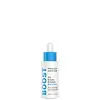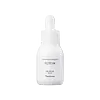What's inside
What's inside
 Key Ingredients
Key Ingredients

 Benefits
Benefits

 Concerns
Concerns

No concerns
 Ingredients Side-by-side
Ingredients Side-by-side

Water
Skin ConditioningEctoin
Skin ConditioningIsopentyldiol
HumectantTriethylhexanoin
MaskingDiisopropyl Adipate
EmollientIsoamyl Laurate
EmollientDicaprylyl Carbonate
EmollientUndecane
EmollientPolyglyceryl-4 Oleate
EmulsifyingSqualane
EmollientTridecane
PerfumingPolyglyceryl-6 Oleate
EmulsifyingPolyhydroxystearic Acid
Emulsifying1,2-Hexanediol
Skin ConditioningSimmondsia Chinensis Seed Oil
EmollientSodium Hyaluronate
HumectantCaprylic/Capric Triglyceride
MaskingTocopherol
AntioxidantHydroxyacetophenone
AntioxidantGlycogen
HumectantCoco-Caprylate/Caprate
EmollientHydrogenated Olive Oil Unsaponifiables
EmollientSodium Phytate
Citric Acid
BufferingStearalkonium Hectorite
Gel FormingPolyglyceryl-3 Diisostearate
EmulsifyingPolyglyceryl-3 Polyricinoleate
EmulsifyingWater, Ectoin, Isopentyldiol, Triethylhexanoin, Diisopropyl Adipate, Isoamyl Laurate, Dicaprylyl Carbonate, Undecane, Polyglyceryl-4 Oleate, Squalane, Tridecane, Polyglyceryl-6 Oleate, Polyhydroxystearic Acid, 1,2-Hexanediol, Simmondsia Chinensis Seed Oil, Sodium Hyaluronate, Caprylic/Capric Triglyceride, Tocopherol, Hydroxyacetophenone, Glycogen, Coco-Caprylate/Caprate, Hydrogenated Olive Oil Unsaponifiables, Sodium Phytate, Citric Acid, Stearalkonium Hectorite, Polyglyceryl-3 Diisostearate, Polyglyceryl-3 Polyricinoleate
 Reviews
Reviews

Ingredients Explained
These ingredients are found in both products.
Ingredients higher up in an ingredient list are typically present in a larger amount.
1,2-Hexanediol is a synthetic liquid and another multi-functional powerhouse.
It is a:
- Humectant, drawing moisture into the skin
- Emollient, helping to soften skin
- Solvent, dispersing and stabilizing formulas
- Preservative booster, enhancing the antimicrobial activity of other preservatives
Ectoin is a compound found naturally in some species of bacteria. It can be synthetically created for skincare use.
This ingredient is an osmolyte; Osmolytes help organisms survive osmotic shock (it protects them from extreme conditions). It does this by influencing the properties of biological fluids within cells.
When applied to the skin, ectoin helps bind water molecules to protect our skin. The water forms a sort of armor for the parts of our skin cells, enzymes, proteins, and more.
Besides this, ectoin has many uses in skincare:
A study from 2004 found ectoin to counteract the damage from UV-A exposure at different cell levels. It has also been shown to protect skin against both UV-A, UV-B rays, infrared light, and visible light.
Studies show ectoin to have dual-action pollution protection: first, it protects our skin from further pollution damage. Second, it helps repair damage from pollution.
In fact, ectoin has been shown to help with:
Fun fact: In the EU, ectoin is used in inhalation medication as an anti-pollution ingredient.
Ectoin is a highly stable ingredient. It has a wide pH range of 1-9. Light, oxygen, and temperature do not affect this ingredient.
Learn more about EctoinWater. It's the most common cosmetic ingredient of all. You'll usually see it at the top of ingredient lists, meaning that it makes up the largest part of the product.
So why is it so popular? Water most often acts as a solvent - this means that it helps dissolve other ingredients into the formulation.
You'll also recognize water as that liquid we all need to stay alive. If you see this, drink a glass of water. Stay hydrated!
Learn more about Water